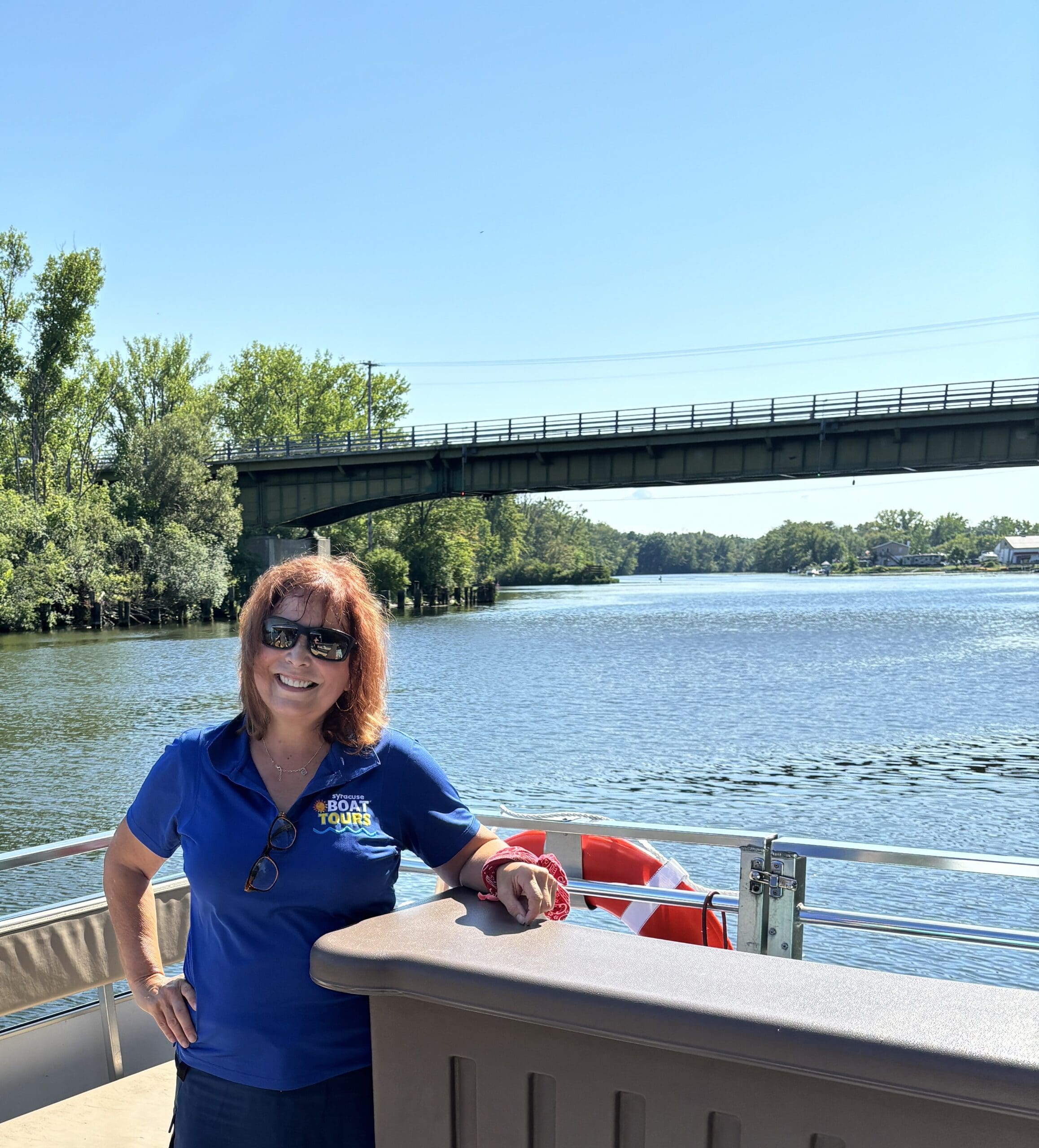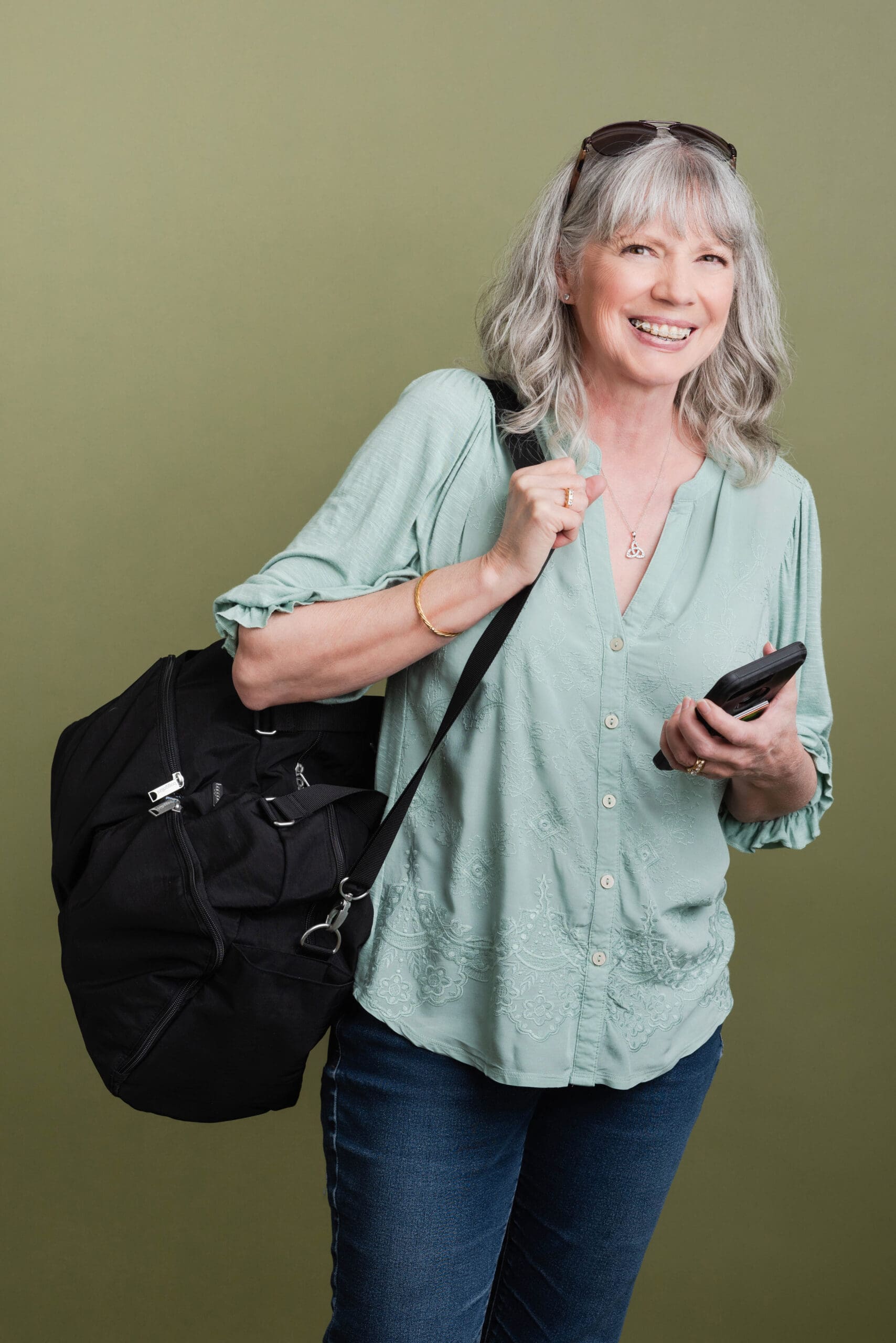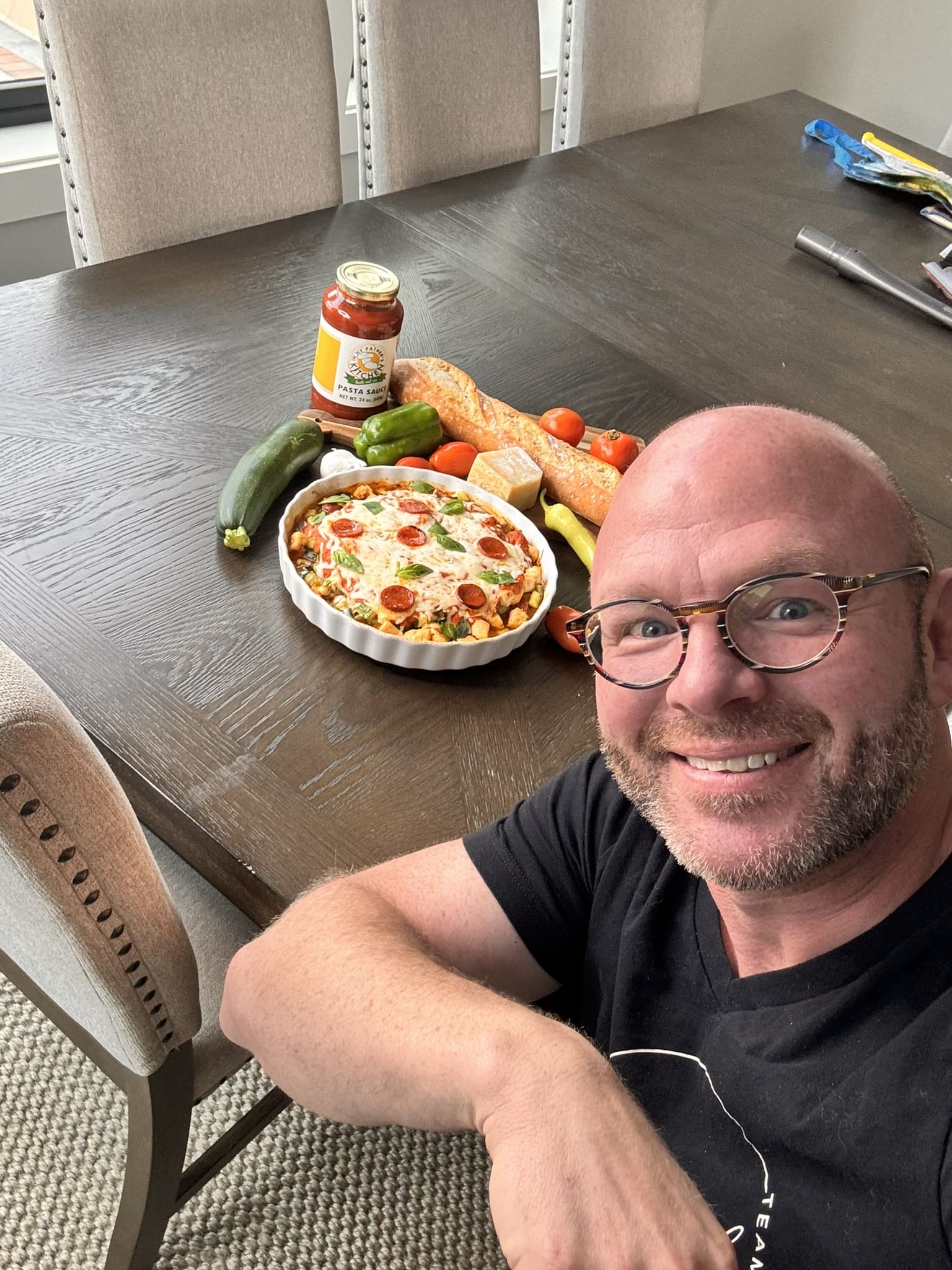BY SARAH HALL
Science education is in Lauren Kochian’s blood.
“My mom was a teacher in the city schools for 40 years, a science teacher, actually,” Kochian said. “To me, education is critical.”
That’s why Kochian, as president of the Milton J. Rubenstein Museum of Science & Technology (the MOST) in Syracuse, sees herself as more than just a number-cruncher or pencil-pusher. Instead, she thinks of herself as an empathic leader for her staff, a “citizen scientist” responsible for helping to educate the public and a steward for the museum that serves as a STEM center for Central New York.
“Even if you don’t choose to study STEM or work in STEM or become an engineer, I believe that everybody should have an appreciation for your surroundings,” Kochian said. “Everybody should be observant, like a scientist in your everyday life. Everybody should appreciate how important STEM is.”
It takes a village
Kochian started at the MOST three years ago, but she’s worked in the nonprofit sector for about 20 years. She found she had a knack for fundraising while working for Syracuse Stage.
“I had never done fundraising before, and it turned out that I liked it,” she said. “I was good at it. I had an amazing mentor at Syracuse Stage, and I just loved it.”
But given her proclivities for science, Kochian was drawn to an opportunity at the MOST when the opportunity arose.
“I’m one of those people who really is just what I call the citizen scientists,” Kochian said. “I’m a nature person, appreciative of how important science is.”
Kochian joined the development staff at the MOST in 2016 and took over as president last August. She said the museum is one of the reasons the Syracuse area is attractive to families.
“Syracuse is a great place to live, and it’s a great place to raise children and it’s in part because of places like the MOST,” she said.
Kochian would know — she’s also a single mom to a 14-year-old son and an 11-year-old daughter. Like many working moms, she struggles to balance her career with parenting.
“Juggling the work-life balance is never easy for anyone, let alone single parents,” she said. “My goal as a single mother is to serve as a role model for both of my kids. I hope to show them the importance of being a good, empathic leader in all parts of life, from home to work to community.”
Kochian said she’s fortunate to have some help.
“My parents and family, my friends, my partner and, of course, my incredible staff and boards make all of it possible,” she said. “I know women feel a lot of pressure to be perfect, to not ask for help, but we need to cut ourselves more slack and allow people in our lives to pitch in and support us.”
Making learning accessible
Kochian said she gets plenty of support in her work, as well—and it’s important work.
“We have a lot of really well-kept secrets here about the work that we do in the community,” she said. “It’s not just that we’re a science museum, but it’s that we’re a science museum in Central New York where hundreds and hundreds of STEM jobs go unfilled… We’re really a STEM learning center.”
In addition to summer camps, planetarium, IMAX theater and permanent exhibits on space, energy, Earth science and, yes, dinosaurs, the MOST offers a number of different programs to get kids and families interested in science. The museum reaches thousands of those kids through a partnership with the Syracuse City School District that offers supplemental learning experiences to augment the instruction they’re getting in the classroom. Some 5,000 students in kindergarten, fourth grade and eighth grade visit the MOST regularly through the National Grid Science Learning Partnership, and in the 2019-20 school year, the district’s universal pre-K students will join that group.
“Not only does it reinforce the classroom learning, but it may just spark an interest [in STEM],” Kochian said. “It’s really cool stuff, and it’s stuff they can’t necessarily do in the classroom setting… That’s what I love about the MOST to this day — we’re doing all the right kinds of programing for the community in which we live.”
The MOST is also open to the public five days a week, 10 a.m. to 5 p.m. Wednesday through Sunday. Admission starts at $10, and memberships are available for $59 to $119.
But cost, Kochian said, should never be a barrier to learning; that’s why she introduced an EBT cardholder admission program.
“Anybody in New York state that has an EBT card can come in at $2 for an adult and $1 for a child,” she said. “We’re trying to make it really accessible because we believe that what we’re doing is so important for the community.”
Accessibility is important to Kochian, no matter the child’s needs. The MOST is one of several Central New York organizations to offer sensory-friendly time; one Saturday night a month for two hours, the staff dims the lights and mutes the sounds and offers sensory-friendly activities for kids with autism or other sensory processing disorders to “make it a more soothing experience,” Kochian said.
On another Saturday each month, the museum welcomes an expert to speak for the Be the Scientist program.
“We actually bring professionals in and kids get to do hands on stuff that we might not necessarily have in the museum,” Kochian said. “We’ve had pilots, we’ve had landscape architects — you name it. Then they go explore the museum and look for things that tie into what they just learned about.”
Community stewards
When it comes to programming, there’s a lot more coming. Earlier this summer, the MOST opened its latest permanent exhibit: the Dino Zone, a life-sized dinosaur exhibit created with guidance from paleontologists that features interactive activities to help visitors learn more about the Jurassic and Cretaceous periods.
“We’re really excited about that,” Kochian said. “Dinosaurs are obviously very popular. For us to have [an exhibit] permanently, as opposed to a visiting exhibit, that’s monumental. I think we can anticipate a lot more steady foot traffic as a result.”
Kochian said she and the senior staff at the MOST have a plan to look at the museum’s exhibits in the coming months and years, both to bring in new permanent exhibits and to update what’s already in place.
“The nice thing about being in a science museum is STEM is everything and everywhere,” she said. “There’s really no shortage of interesting things that we could bring in.”
Of course, there are other updates that need to be made first. The museum has been housed in the former New York State Armory since 1992. The building, originally constructed in 1876 as a combination social/drill center and depository for arms and equipment for the National Guard, has seen better days. Kochian said the MOST has gotten some state funding to make necessary repairs to the roof and boiler, but that’s just the beginning.
“It’s really stopgap, critical repair type of stuff,” she said. “We have a couple of things that we’re going to have to address, and the building is one of them.”
Kochian said taking care of the building is one of her most important responsibilities.
“We have taken on this responsibility on behalf of the community,” she said. “This Armory is the heart of Armory Square. It’s the heart of downtown. It’s an iconic building. It’s important to our history and to our community. It’s the MOST’s responsibility to maintain it, and we are committed to that.”
Leading with integrity
“As a nonprofit institution, donations are so important. However, since we don’t necessarily do work that makes an emotional appeal, fundraising can be challenging at times,” Kochian said. “We’re lucky to be part of a STEM region, because STEM corporations make up the shortfall we may see from individual donations.”
It’s not just donations the MOST is competing for.
“We’re also fighting for entertainment dollars. There’s so many things to do in Syracuse with little ones,” Kochian said. “We are also competing for the attention and the money of families. Those things can be challenging.”
Kochian said her senior leadership and her staff have risen to every challenge.
“They just do an amazing job,” she said.
For her part, Kochian said she aims to be an empathic leader.
“My job is to bring the right people to the table, use my resources and lead with a combination of the heart and the mind,” she said. “I’m a big believer in us always doing the right thing, but also putting out the right energy. I truly believe that what you put out there in the world, both personally and professionally, you get back.”
Kochian said success comes from doing the right things.
“We are acting with integrity. We have our mission in mind. We have with the community in mind. That’s why these things are happening,” she said. “It’s not dumb luck. It’s our efforts coming back and returning to us. It’s not just to me, it’s not just the decisions you sit and make around the table. It’s how you put it out there into the world.”
And she said being a woman and a mom has helped to make her a strong, empathic leader.
“Leading doesn’t just mean telling people what to do,” she said. “It means inspiring people to a shared, collaborative vision, and caring about your team. I think women are naturally more nurturing and that tends to affect how we run a business and how we support our staff.”
As a woman in STEM — a traditionally male-dominated field — Kochian said she feels a responsibility to pave the way for other women, and it’s one she plans to live up to.
“You will see the MOST embarking on more Girls in STEM programming,” she said. “We are doing this not only to fulfill a need for STEM practitioners in our community, but also because we feel it’s our responsibility to empower girls in their education.”
Why STEM?
Education, as Thomas Jefferson said, is the great equalizer, and Kochian believes it’s of the utmost importance.
“I am a true believer that education really can give people a leg up in life, which is why we are so committed to it,” she said. “We believe that education is important for everyone and it advances all of us.”
She pointed again to the STEM jobs across the country and Central New York that sit open waiting for people with the appropriate skills to take them.
“Technology’s changing so fast we can’t even keep up with it,” she said. “If you have a firm understanding of math and science, it’s going to help you in school. It’s going to help you in your work.”
The MOST, she said, provides a place where kids (and adults) can get hands-on experience with science and hopefully spark an interest in pursuing further education. She wants the MOST to be a resource in the community for all STEM-related education.
“It’s our responsibility to be informed as people, and it’s our responsibility as the MOST to present information,” Kochian said. “There are a lot of reasons that STEM is important. Obviously we would love for every kid to go on and get an amazing STEM career. Is that going to happen to all of our visitors? No of course it’s not. If we can provide something along the way that helps them in their studies or helps them appreciate nature or the environment, then we’ve done our job.”





